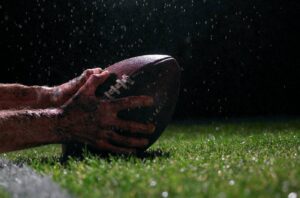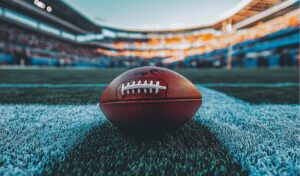
The Elbow Center
Led by Dr. Charles Ruotolo, Dr. Richard McCormack, Dr. Rhyne Dengenis, Dr. Elizabeth Morrison and Dr. Brett Spain
Let us help you find a doctor. Call 855.321.6784 or browse our specialists.
Elbow Conditions We Treat
At Total Orthopedics & Sports Medicine, we treat a variety of conditions involving problems with the elbow. Select a condition or surgery below to learn more.
Tennis Elbow
Tennis elbow is an injury to the muscles and tendons on the outside of the elbow which is the end result of overuse and/or repetitive stress. The outside portion of the elbow becomes inflamed and becomes very sore.
As the namesake for the condition, tennis is the most common sport that is associated with this diagnosis. However, tennis players represent only a small portion of the types of people who suffer from this condition. Use of the wrist and forearm to increase power during arm movement, rather than the core, will increase the risk of lateral elbow pain.
Symptoms of this injury may include:
- Recurring pain in the upper forearm just below the bend of the elbow
- Pain caused by lifting or bending the arm or grasping objects
- Loss of full range of motion
- Pain that typically lasts for 6 to 12 weeks at a time
Golfer’s Elbow
Golfer’s Elbow also is termed Medial Epicondylitis. This is an injury to the muscles and tendons on the inside of the elbow which help flex the wrist and fingers. Repeating some types of activities over and over again can put too much strain on the elbow tendons causing inflammation and soreness.
Although a golf swing is a common cause of this injury, golfers represent only a small portion of the types of people who suffer from this condition. Any activities that stress the same forearm muscles can cause symptoms of golfer’s elbow.
Symptoms of this injury may include:
- Pain caused by lifting or bending the arm or grasping objects
- Loss of full range of motion
- Pain when the muscles are stretched
Cubital Tunnel Syndrome
This condition is also referred to as Ulnar Nerve Entrapment. The Ulnar Nerve extends from the shoulder into the pinky and ring finger and sends nerve signals through the forearm and hand. If this nerve becomes compressed or entrapped it may result what is known as “palsy”, which would cause the hand to look deformed and make use of the hand difficult for the patient. The most common area for this nerve to become entrapped is at the point of the elbow, in the funny bone area.
In many instances, Ulnar Nerve Entrapment is caused by repetitive overuse of the elbow, such as manual labor or repetitive motion. In this instance, the nerve can become irritated and inflamed. Also, if the nerve becomes deranged and extends over the elbow the nerve can become severed.
Signs and symptoms of Ulnar Nerve Entrapment may include:
- Weakness in the hand
- Clawed appearance of the hand
- Motor skill deficiencies
- Tingling in the palm and/or fourth and fifth fingers
- Sensitivity to cold
- Tenderness in the elbow joint
Elbow Instability/Lateral Collateral Ligament Injury
Lateral Collateral Ligament (LCL) injuries are often associated with an awkward fall onto or significant contact made towards the elbow. When the LCL in the elbow is damaged, this is most commonly the result of a fracture or dislocation in the elbow. A fracture or dislocation can cause elbow instability.
Elbow Instability is a condition in which the stability of the elbow is compromised causing the elbow joints to “catch” or “pop” when in use. One of the more common symptoms is the feeling of the elbow slipping out of place while in use.
Elbow Instability can be the result of several different conditions including:
- Elbow dislocation
- Elbow fracture
- Repetitive trauma to the elbow
- Damage to one of more of the ligaments of the elbow
Signs and symptoms of Elbow Instability may include:
- Deformity in the elbow region
- “Catching” or “popping” of the elbow joints
- Pain in the elbow
- Weakness of the elbow
- Motor deficits
Ulnar Collateral Ligament Injury
The UCL is a tiny strip of tissue that connects the humerus (upper arm) to the ulna (wrist bone). Its job is to protect the elbow against valgus stress, which is the sideways bend in the arm that occurs during the process of throwing a baseball. Repetitive stress on the elbow comes with playing the game of baseball, and this stress can eventually lead to a ligament to become stretched or torn making it impossible to keep the elbow stable.
Injury to the UCL may occur acutely with a single event or gradually over time. These injuries are usually associated with a painful pop and constant pain on the inner part of the elbow. Typically, one cannot throw anymore after this injury occurs. Swelling will quickly accompany the pain in this area. Chronic injuries are the most common and most often occur in baseball pitchers. The UCL can also be damaged from a fall or forced trauma, which results in elbow instability.
Many athletes with elbow instability from UCL injury can be treated successfully with rehabilitation and without invasive procedures. If the condition fails to respond to non-surgical treatments, Tommy John Surgery may be the next option.
Osteochondritis Dissecans
Osteochondritis Dssecans involves a loss of blood supply or even death to part of the cartilage within the elbow joint. The cause of this may be related to repetitive trauma (undiagnosed injury(s) that damage the bone and cartilage). It can also come about due to genetic family history.
This condition most often affects teens between the ages of 11-18, especially teens who are active in high-impact sports, such as football, baseball/softball, tennis and weight-lifting. As noted above, it is thought to be related to repeated impact to, or use of the elbow, which over time slows or stops the blood flow to the cartilage. It is very common for the patient not to be aware that any cartilage injury has taken place until pain or loss of mobility occurs.
Some common symptoms of Osteochondritis Dissecans are:
- Pain, especially when fully bending or straightening the elbow
- Elbow catching and locking when bending
- Swelling and tenderness in the elbow
- Difficulty moving the elbow
- Loss of full range of motion in the elbow
Osteoarthritis
Osteoarthritis (OA) of the elbow occurs when the cartilage surface of the elbow is damaged or becomes worn. This can happen because of a previous injury such as elbow dislocation or fracture, but it also may be the result of degeneration of the joint cartilage from age. When it comes to OA, the elbow is one of the least affected joints because of its well matched joint surfaces and strong stabilizing ligaments. As a result, the elbow joint will tolerate large forces put upon it without it becoming too unstable.
The main symptoms that go along with OA in the elbow are constant, dull pain and loss of range of motion. The patient may also feel a “grating and/or locking” while using the affected elbow. Swelling may come about later in the process.
Elbow Procedures
At Total Orthopedics and Sports Medicine, we perform a variety of procedures to help with elbow conditions. Click on a surgery below to learn more.Tommy John Surgery
Tommy John Surgery, known to surgeons as Ulnar Collateral Ligament Reconstruction, was named after an excellent pitcher named Tommy John, who suffered a tear in his UCL during the 1974 season. He decided to undergo to this then-unknown operation in order to return to pitching. He went on to pitch 26 seasons in the big leagues, 15 of which came after his operation. Fast forward 40 years and this has become one of the most common procedures that baseball players will have, with over 30 pitchers undergoing Tommy John surgery in the past year alone.
The UCL is a tiny strip of tissue that connects the humerus (upper arm) to the ulna (wrist bone). Its job is to protect the elbow against valgus stress, which is the sideways bend in the arm that occurs during the process of throwing a baseball. Repetitive stress on the elbow comes with playing the game of baseball, and this stress can eventually lead to a ligament to become stretched or torn making it impossible to keep the elbow stable.
The surgery itself involves using a harvested tendon and threading it through holes drilled into the humerus and the ulna and repairing the UCL to add strength. To dispel a popular myth, a surgically repaired UCL is not stronger than one that has never been injured and will not improve a pitcher’s ability.
Injury to the UCL may occur acutely with a single event or gradually over time. These injuries are usually associated with a painful pop and constant pain on the inner part of the elbow. Typically, one cannot throw anymore after this injury occurs. Swelling will quickly accompany the pain in this area. Chronic injuries are the most common and most often occur in baseball pitchers.
Medial Epicondylar Release
A medial epicondylar release is performed when a patient has failed conservative treatment for chronic medial epicondylitis (also known as Golfer’s Elbow) and continues to have pain. The pain occurs on the inside of the elbow. Often patients who suffer from medial epicondylitis also have a torn or damaged tendon at the elbow.
A medial epicondylar release is an open procedure, where a small 3 cm incision is made on the inside of the elbow. During the procedure, the tendon that attaches to the inside of the elbow is located and evaluated for any injury or damage. It is commonplace for that tendon to be split during this procedure as to help the surgeon locate all of the loose debris. The debridement of the medial epicondyle occurs, removing any scar tissue or inflammatory tissue that has developed as a result of long term golfer’s elbow. If needed the tendon would be repaired with a strong suture. A patient is placed in a soft cast to immobilize the wrist.
Elbow Tendon Repair
The repair of a damaged tendon can be done by one of two procedures:
- Tendon debridement- This procedure is commonly performed on patients suffering from tendinitis. In this procedure the surgeon will make a small 1 inch incision along the bump on the elbow. The surgeon removes any debris (scar tissue or inflammatory tissue) that has developed as a result of a long term injury to the tendon.
- Tendon release- This is most common procedure done for tendon repair. In this procedure the surgeon locates the root of extensor or flexor tendon on the elbow and splits the damaged tendon while also performing a debridement around the tendon. Sometimes the loose end of the tendon may be sutured to the surrounding connective tissue
Bicep Tendon Tear/Bicep Reconstruction
The bicep is one of the main muscles in the upper arm that is responsible for bending the elbow and rotating the forearm and wrist. The bicep tendon is the link between the muscle of the biceps and the bones below the elbow. An injury can occur due to repetitive use or due to a sudden force or trauma, resulting in a tearing of the tendon. Such might occur when trying to prevent something heavy from falling or carrying a heavy object.
A tear of the bicep tendon may be partial or complete. Complete tears of the biceps tendon are most prevalent in middle-aged men.
Symptoms of partial tendon tears include pain, swelling, tenderness in the elbow crease or just below the elbow crease, especially during use of the elbow and hand. One might also notice weakness in elbow and forearm strength.
When a complete tear occurs the patient would feel a snapping noise in the front of the elbow with immediate pain and swelling to follow. Bruising around the elbow may develop not long after the injury. Another sign of a complete tear is the appearance of shortening or retraction of the biceps muscle itself. Even in complete tears the ability to bend the elbow and rotate the forearm is usually maintained. This injury requires prompt surgery to repair the torn tendon.
Signs and symptoms of a Bicep Tendon Tear may include:
- Pain and swelling the bicep
- Tenderness just below the crease of the elbow
- Bruising around the elbow
- Shortening or retraction of the bicep muscle
Bicep reconstruction is also referred to as bicep tenodesis. Bicep tenodesis is the surgical repair of an injured or degenerative bicep tendon through the use of a screw or washer and sutures. The repair will be done with a combination of small incisions to look inside the shoulder and a small open incision to repair and reattach the healthy part of the tendon. This is commonly an outpatient procedure.
Triceps Tendon Repair
A triceps tendon rupture occurs when the tendon of the triceps muscle is put under an immense amount of stress and tears usually directly from the elbow joint. Patients suffering from this condition often experience pain and an inability to straighten the elbow with significant swelling of the back of the elbow. While partial tears of the triceps tendon can often be treated non-surgically, patients suffering from a complete tendon rupture will likely require prompt surgery to repair the tendon and resume normal arm function.
Elbow Arthroscopy
Arthroscopy is a procedure that orthopedic surgeons use to inspect, diagnose, and repair problems inside a joint. During elbow arthroscopy, the surgeon will insert a small camera called an arthroscope, into the elbow joint. The camera displays pictures on a screen which the surgeon will use to complete the procedure.
The arthroscope and surgical instruments are small and thin, allowing the surgeon to complete the procedure using very small cuts, rather than an open surgery. This results in less pain for patients, less joint stiffness, and shortens the recovery time for the patient.
Arthroscopic surgery is often the ideal choice for treating certain elbow conditions such as loose bodies, stiffness, osteoarthritis and osteochondritis dessicans. These injuries can damage the ends of the bones and cause bone spurs to develop. These can be painful and make it hard to move the elbow, to the point where this procedure is needed to regain full range of movement in the elbow.







 Website Design by
Website Design by